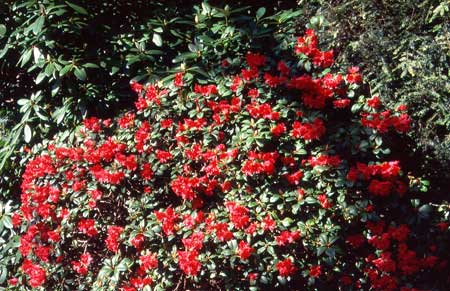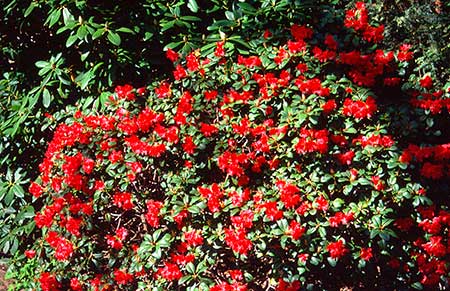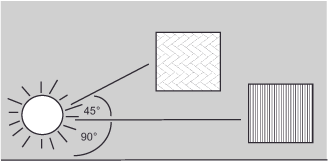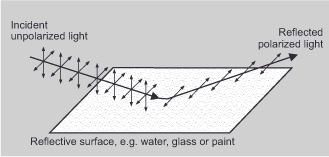You are here: Nature Science Photography – Lightness and color – Color saturation
The reflections that are often encountered, which not only look unsightly but also weaken color saturation, are best dealt with by using a polarizing filter for color and black-and-white shots in analog and digital photography.

Polarization is the production of a uniform direction of oscillation from the otherwise irregular oscillations of the incident radiation.
The main parts of these polarization filters are two clear plastic foils that are arranged between two glass surfaces and have a lattice structure made up of long, parallel molecular chains of something like polyvinyl alcohol (PVA). Due to their chemical nature, the materials used are able to absorb the part of the radiation that is not parallel to their orientation. Thus, if unpolarized light containing electromagnetic waves with many different orientations of the electric fields is incident and the filter grating is vertical, only the vertically oscillating portions of the waves can pass through. The horizontally oscillating ones are held back because of their too large expansion in this direction. Electromagnetic waves polarized at an angle (not purely vertical or horizontal) lose intensity when passing through such a filter to the extent that their polarization angle deviates from the vertical.
The effect of the stronger clouds, sought primarily in landscape photography, takes advantage of the fact that the sky blue is much more polarized than the light scattered by the clouds. Due to the properties of the air molecules scattering the light, the plane of maximum polarization of the skylight lies at an angle of 90° to the sun. Used in this direction, the polarizing filter develops its strongest effect. However, haze and turbidity of the atmosphere have a disadvantageous effect on the sky polarization. A pale blue to white sky behind the sun greatly weakens its polarization effect, while a yellowish white sky has no polarization effect at all. In this case, the use of a polarizing filter no longer leads to a stronger saturation of the sky color. Take caution when taking wide-angle photographs in such situations. The part of the sky imaged with them is often larger than the 90° mentioned, and for this reason, all too often it shows the rise and fall of the degree of polarization in relation to the sun as a bizarre progression from light blue to dark blue and back to light blue again. However, if you are aware of this phenomenon, you can utilize it to highlight specific details in the image below.



Another application of the polarizing filter is the cancellation of reflections on glass, water, plastic or painted surfaces. To do this, it takes advantage of the fact that most such non-metallic surfaces polarize the light, i.e., instead of reflecting it in the many different directions of vibration in which it is incident, they reflect it in only one or a few different ones. To eliminate all interfering reflections, the angle of illumination and the angle of incidence must be identical and correspond to the angle of maximum polarization of 30°-40° (Brewster’s angle). Under these conditions, plastics often exhibit rainbow-colored stripes due to their internal stress.


You can determine the desired strength of reflection reduction or color saturation by turning the filter mount until the polarizing foil’s grating is approximately perpendicular to the direction of oscillation of the respective light component. The SLR viewfinder precisely reproduces this.
Polarizing filters come in a simple linear and a somewhat more elaborate circular design. Modern SLR cameras with autofocus usually need the latter version since linearly polarized light behaves differently on the crystal surface of the measuring chips than unpolarized light. Circularly polarized light, on the other hand, behaves similarly to unpolarized light. However, both types extend the exposure by one to two exposure stops, depending on the thickness of the glass and the filter setting.
The polarizing filter is even more productive when used in combination with other filters. For example, a light blue conversion filter of type KB 1.5 in combination with a normal polarizing filter is able to make the existing cloud formation sunny, bright and friendly regardless of the illumination. Conversely, a weak red filter, such as the KR 1.5, creates a dramatic thunderstorm-like image atmosphere. Particularly noteworthy in this respect are also the products of the company Singh-Ray Filters from Florida/USA, whose Gold-N-Blue, Red-Ray or Color Intensifier Polarizers combine exactly these combination effects in one filter and thus help to avoid the slight cyan cast of many normal polarizing filters.
Next Rain, Uniform Light, UV Filters
Main Lightness and Color
Previous Shooting time
If you found this post useful and want to support the continuation of my writing without intrusive advertising, please consider supporting. Your assistance goes towards helping make the content on this website even better. If you’d like to make a one-time ‘tip’ and buy me a coffee, I have a Ko-Fi page. Your support means a lot. Thank you!


 Since I started my first website in the year 2000, I’ve written and published ten books in the German language about photographing the amazing natural wonders of the American West, the details of our visual perception and its photography-related counterparts, and tried to shed some light on the immaterial concepts of quantum and chaos. Now all this material becomes freely accessible on this dedicated English website. I hope many of you find answers and inspiration there. My books are on
Since I started my first website in the year 2000, I’ve written and published ten books in the German language about photographing the amazing natural wonders of the American West, the details of our visual perception and its photography-related counterparts, and tried to shed some light on the immaterial concepts of quantum and chaos. Now all this material becomes freely accessible on this dedicated English website. I hope many of you find answers and inspiration there. My books are on